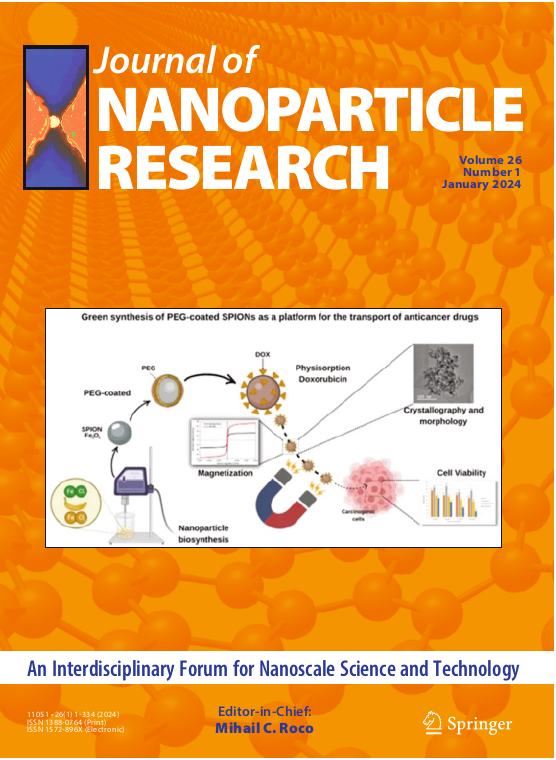An in vitro study on macrophage toxicity of allotrope silver nanoparticles
IF 2.6
4区 材料科学
Q3 CHEMISTRY, MULTIDISCIPLINARY
引用次数: 0
Abstract
Recent studies have established EVQ-218 as a novel type of allotrope silver nanoparticle (AgNP). The patented laser-based method of manufacture imparts EVQ-218 with unique surface properties that enhance particle stability without capping agents and other stabilizing chemistry. In this study, EVQ-218 was screened against RAW 264.7 murine macrophages, MH-S murine alveolar macrophages, and THP-1 human monocyte cell lines. IC50 values were obtained, and cellular uptake and phagocytosis assays were conducted. Results of this study indicate that the intracellular uptake of EVQ-218 did not make any apparent physiologically significant change in cell morphology and phagocytic activity of macrophages at nontoxic doses.
同素异形体纳米银对巨噬细胞毒性的体外研究
最近的研究已经确定EVQ-218是一种新型的同素异形体纳米银颗粒(AgNP)。专利的激光制造方法赋予EVQ-218独特的表面特性,无需封盖剂和其他稳定化学物质即可增强颗粒稳定性。在本研究中,EVQ-218对RAW 264.7小鼠巨噬细胞、MH-S小鼠肺泡巨噬细胞和THP-1人单核细胞进行了筛选。获得IC50值,并进行细胞摄取和吞噬实验。本研究结果表明,在无毒剂量下,细胞内摄取EVQ-218对巨噬细胞的细胞形态和吞噬活性没有明显的生理意义上的改变。
本文章由计算机程序翻译,如有差异,请以英文原文为准。
求助全文
约1分钟内获得全文
求助全文
来源期刊

Journal of Nanoparticle Research
工程技术-材料科学:综合
CiteScore
4.40
自引率
4.00%
发文量
198
审稿时长
3.9 months
期刊介绍:
The objective of the Journal of Nanoparticle Research is to disseminate knowledge of the physical, chemical and biological phenomena and processes in structures that have at least one lengthscale ranging from molecular to approximately 100 nm (or submicron in some situations), and exhibit improved and novel properties that are a direct result of their small size.
Nanoparticle research is a key component of nanoscience, nanoengineering and nanotechnology.
The focus of the Journal is on the specific concepts, properties, phenomena, and processes related to particles, tubes, layers, macromolecules, clusters and other finite structures of the nanoscale size range. Synthesis, assembly, transport, reactivity, and stability of such structures are considered. Development of in-situ and ex-situ instrumentation for characterization of nanoparticles and their interfaces should be based on new principles for probing properties and phenomena not well understood at the nanometer scale. Modeling and simulation may include atom-based quantum mechanics; molecular dynamics; single-particle, multi-body and continuum based models; fractals; other methods suitable for modeling particle synthesis, assembling and interaction processes. Realization and application of systems, structures and devices with novel functions obtained via precursor nanoparticles is emphasized. Approaches may include gas-, liquid-, solid-, and vacuum-based processes, size reduction, chemical- and bio-self assembly. Contributions include utilization of nanoparticle systems for enhancing a phenomenon or process and particle assembling into hierarchical structures, as well as formulation and the administration of drugs. Synergistic approaches originating from different disciplines and technologies, and interaction between the research providers and users in this field, are encouraged.
 求助内容:
求助内容: 应助结果提醒方式:
应助结果提醒方式:


